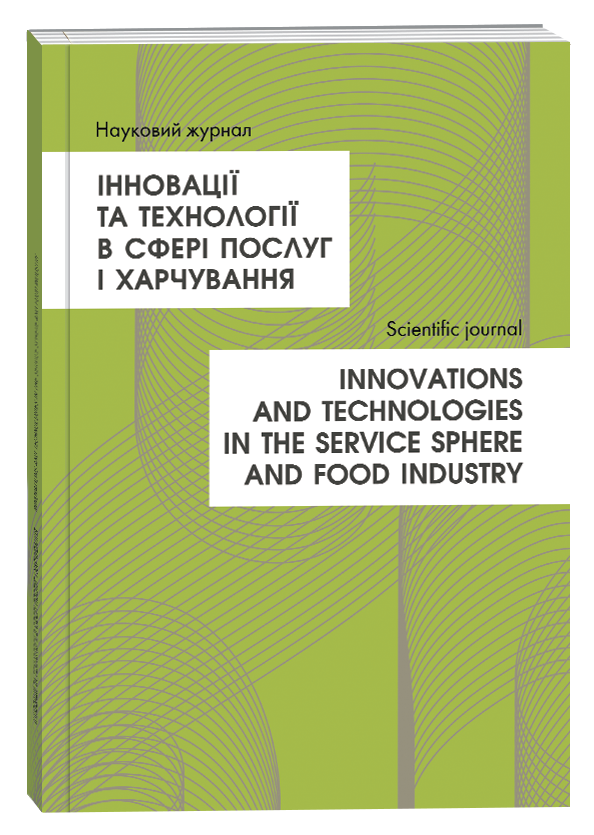BEER FLAVOR FORMATION
Abstract
There is an opinion that one can find from one thousand to two thousand different aromatic compounds in beer. And although no one can even hope to be able to distinguish them all, mastering the dictionary of beer flavors and aromas is a very important task for a taster. “Beer aromatic spiral” helps to solve this problem. This scheme organizes beer aromas from broad categories to specific aromas. For the tasters it’s better to move from general to more specific groups as they try to identify and put specific aromatic nuances into words. Tasting beer, tasters can determine not only the smallest deviations in taste, but also their causes - the characteristics of malt, humulus, water, temperature regimes of beer production, filtration conditions, etc. The direct sources of the smell of beer are essential oils from humulus, by-products of fermentation, which can be formed during various violations of the technological process and the use of low-quality yeast strains. This article examines the influence of organic compounds formed during beer fermentation on the taste and aroma of the finished product. In particular, higher alcohols 3-methylbutanol, 2-phenylethanol, glycerin. Depending on the concentration of these impurities in the beer, the aroma can range from pleasant fruity to heavy and sharp one, organic, similar to nail polish smell. Biologically active substances, such as amino acids, vitamins, minerals, pass into the drink from raw materials and yeast in the process of their vital activity and affect the taste characteristics of beer. Mineral compounds enter the drink from malt, other raw materials and with water. Beer contains potassium, sodium, calcium, magnesium, phosphorus, sulfur and chlorine ions in biologically significant quantities. Bitter substances, which enter beer from humuluss and give it a specific bitter taste, play an important role in shaping the taste of beer. The impact of carbohydrates, which make up the nutritional value of beer, is considered. They form fullness of taste, consistency of the drink, form sorption complexes with aromatic substances that prevent negative changes during beer storage. Any beer should taste and smell clean, complete, full and fresh. Extraneous flavors, unpleasant bitterness, high acidity and insufficient saturation with carbon dioxide spoil the taste of beer. The finished taste has a beer in which the individual taste components are in a certain ratio and none of them stand out noticeably.
References
Dresel, M., C. Vagt, A. Dunkel, and T. Hofmann The Bitter Chemodiversity of Hops (Humulus lupulus L.). Journal of Agricultural and Food Chemistry. 2016. 64, № 41. Р. 7789–7799.
Mascher M. , Scheuenemanm, U. Davidovich, N. Marom, A. Nimmelbach, S.Huber, A. Koro, et al. Genomic Analysis at 6,00 year old Cultivated Grain Hluminates the Dometication History of Barley. Nature Genetics 48. № 9. 2016. р. 1089–1093.
Monerawela, C., And U. Bond Breving up a Storm: The Genomes of Leger yeasts and How They Evoled. Biotecnology Adrences 35. 2017. Р. 512–519.
Shepherd, Gordon M. Neurogasrronomy How the Brain Creates Flavor and Why it Matters. New York : Colambia University Press, 2011.
Thomas, K. Beer: How It`s Made-The Basics of Bruding. Liguid Bug. Beer and Breueing in Cross-Cultural Perspectisez. 2013. Р. 35.
Tsai, I. F., D. Bensasson.A. Burt and V. Koufopanou Population Genomies of the Wild yeast Saccha romyces paradoxus: Quantifying the Life Cucle. Proceedings of the National Academy of Scienees, USA. 2008. 105. №12. Р. 4957–4962.
Water Hardness and Beers. URL : https://www.Pinterst.com/pin/44311205081231146 (станом на 7 червня 2018).
Асоціація пивоварів Америки. URL: https://www.brewersassociation.org.
Ренді Мошер. Смак пива. Унсайдерський путівник у світі найвидатнішого напою людства. пер. з англ. Лана Світанкава. Львів : Видавництво Старого Лева, 2018. 388 с.
Dresel, M., C. Vagt, A. Dunkel, and T. Hofmann (2016) The Bitter Chemodiversity of Hops (Humulus lupulus L.). Journal of Agricultural and Food Chemistry. 64, № 41. Р. 7789–7799.
Mascher M. , Scheuenemanm, U. Davidovich, N. Marom, A. Nimmelbach, S.Huber, A. Koro, et al. (2016) Genomic Analysis at 6,00 - year- old Cultivated Grain Hluminates the Dometication History of Barley. Nature Genetics 48. № 9.. р. 1089–1093.
Monerawela, C., And U. Bond (2017) Breving up a Storm: The Genomes of Leger yeasts and How They Evoled. Biotecnology Adrences 35. Р. 512–519.
Shepherd, Gordon M. Neurogasrronomy (2011) How the Brain Creates Flavor and Why it Matters. New York. Colambia University Press.
Thomas, K. (2013) Beer: How It`s Made-The Basics of Bruding. Liguid Bug. Beer and Breueing in Cross-Cultural Perspectisez. Р. 35.
Tsai, I. F., D. Bensasson.A. Burt and V. Koufopanou (2008) Population Genomies of the Wild yeast Saccha romyces paradoxus: Quantifying the Life Cucle. Proceedings of the National Academy of Scienees, USA. 105. №12. Р. 4957–4962.
Water Hardness and Beers. Available at: https://www.Pinterst.com/pin/44311205081231146 (станом на 7 червня 2018).
Asotsiatsiia pyvovariv Ameryky. Available at: https://www.brewersassociation.org.
Rendi Mosher. Smak pyva. Unsaiderskyi putivnyk u sviti naivydatnishoho napoiu liudstva. per. z anhl. Lana Svitankava. Lviv : Vydavnytstvo Staroho Leva, 2018. 388 р.



